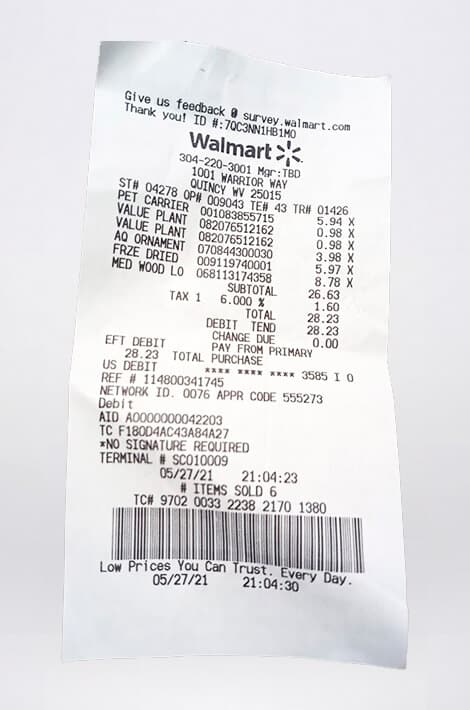Last Updated on November 22, 2024
The consumer-packaged goods (CPG) food industry is booming. Not only that, it’s evolving rapidly. Leading brands across the sector have completely re-imagined their brands to achieve mass-market appeal.
From diversifying their products to reflect the growing onus on sustainability and organic foods to using less non-biodegradable packaging, and even utilizing a receipt parser and other innovative technology to generate marketing opportunities, the food CPG industry is in the process of an intensive evolution.
Interested in learning of four of the more prominent trends that are redefining the food CPG industry for contemporary consumers? Keep reading below.
A Healthy and Socially Conscious Ethos
Wherever we turn in the grocery store, when we’re shopping online or even absorbing advertisements on the television, it’s hard to ignore that emphasis on creating a healthy and socially conscious ethos. This is as evident in the food industry as it is many other sectors.
Indeed, health and wellness rank high on the attributes that consumer believe to be favourable and key determiners in getting them to buy into a brand. This growing change in opinion is aptly highlighted by the fact that sales of processed foods are on the decline whereas foods that are known to have properties which boost our health are on the rise.
Moreover, like the emphasis on paperless transactions – one of the primary, and most lauded benefits of OCR receipt technology – consumers are favouring foods that are socially responsible and eco-friendly. Responding to consumer trends, CPGs are aligning with manufacturers that offer clean label or organic goods. The healthy and socially conscious consumer has been cultivated for years and is expected to grow as we enter the next decade.
Changeable Consumer Tastes
If there’s one thing that’s true it’s that consumer taste is changeable. With current preferences evolving so quickly, food CPG’s need to be agile and reactive. For decades, big-name brand’s conquered public opinion and enjoyed healthy profits. However, in today’s world, their market dominance is being eroded by competitors that focus on value.
As a result, SME’s find themselves in a privileged position, able to challenge the accepted norm and win over more clients than ever before.
Larger companies are having to invest in start-ups or contract manufacturing, overhaul their brand identity or utilize online and other resources to compete with SME upstarts.
Contract manufacturers are helping companies of all sizes to develop a range of products, some of which are outside of their traditional product portfolio to win back customers. Moreover, these same contract manufacturers offer CPG companies access to new processes and designs.
What does this look like? Revamping popular private label CPG products to meet evolving consumer demands is now commonplace. Leading US brands, including Target Kroger and Albertsons have all done this, promoting plant-based and premium-branded offerings to woo customers back to their brand. Moreover, the increased emphasis on technology-driven solutions that focus on convenience and proficient, including receipt parser tech is likely to drive and sway public opinion in the coming decades.
New Marketing Opportunities
It’s impossible to discuss CPG sector disruptions without touching on the profound impact that technology has had on the sector. From the sweeping deployment of social media as a marketing tool to receipt parser technology that allows paper receipt data to be effortlessly transferred to digital format and the influx of data analytics that provide predictive insights into consumer preferences, technology has created a new consumer reality. This is aptly highlighted by OCR receipt technology and its blossoming mainstream adoption.
Savvy CPG companies have managed to jump on the digital bandwagon, honed their strategies, bolstered their image and got their products in front of consumers quicker than their competitors, increasing their influence and ultimately their profits.
But there’s still much potential for CPGs to take advantage of. From using receipt OCR technology to run promotions and gather consumer data to reaching out to influencers to advertise and market products, there are a plethora of new marketing opportunities for CPG companies to explore in the digital age. Expect these to become increasingly prominent in the years to come.
Changes in Regulation
The last trend that’s effecting the CPG sector is the ongoing changes to trade policies. The US food industry, for example, is carefully monitoring developments between the United States-Mexico-Canada Agreement (USMCA), tariffs on imports from China and the Brexit situation.
There’s little doubt that the impact of all three of these political and economic situations could have a knock-on effect on CPGs. New supply chain requirements have already taken effect which emphasize clear labelling and safe delivery. This has caused companies to rethink their supply chain and develop new procurement policies, inspections, factory design and production flows.
Is this likely to be the last regulation change in today’s politically and environmentally charged environment? Probably not. The full fallout from Brexit is still unknown – and this will not be discovered until the spring of 2020 at the very earliest.
What’s arguably the best advice for CPG companies is that they need to be prepared for all eventualities. Whether that means embracing receipt OCR technology and social media branding or looking for supply chain solutions in the event of a hard Brexit, right now there’s a resource that shouldn’t be taken for granted – time.



